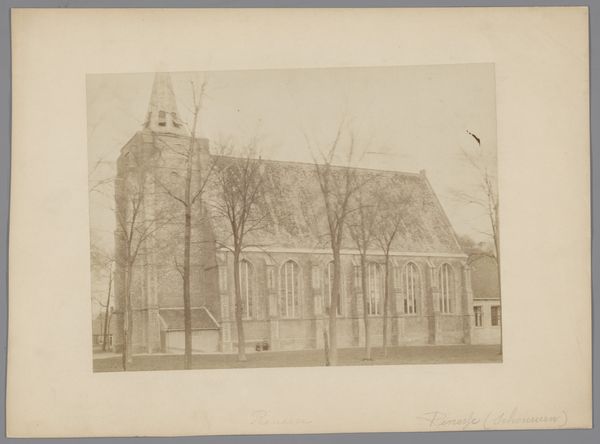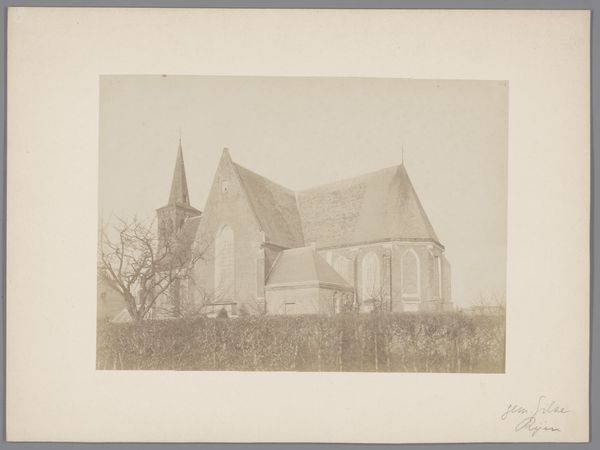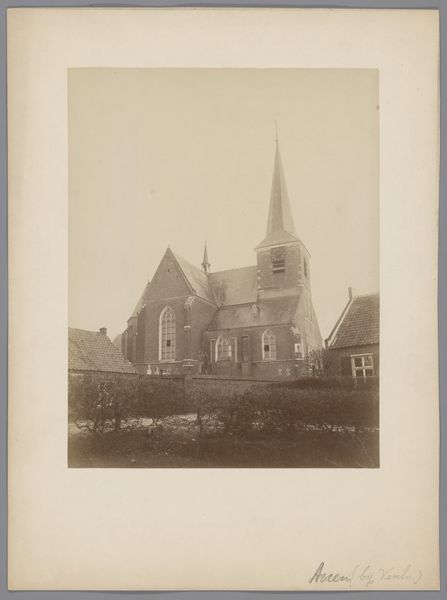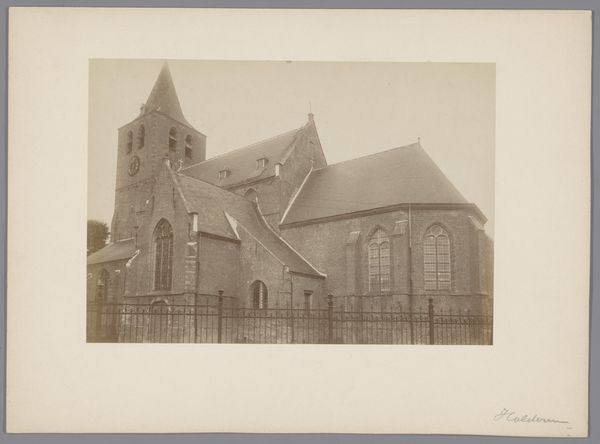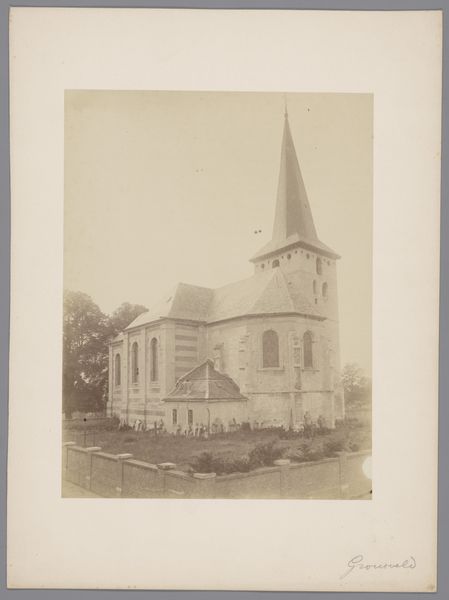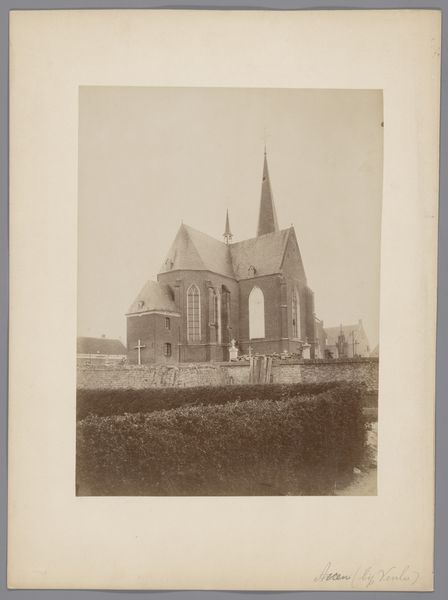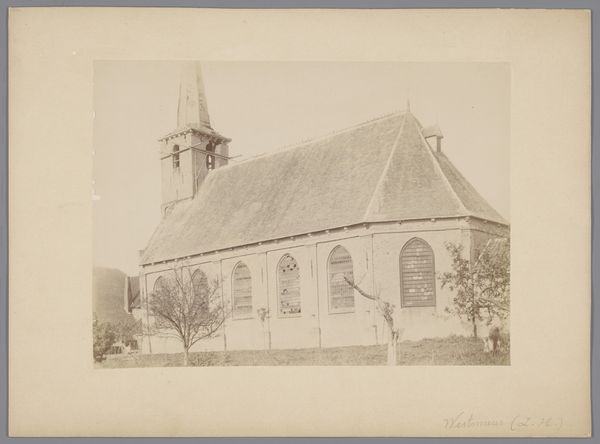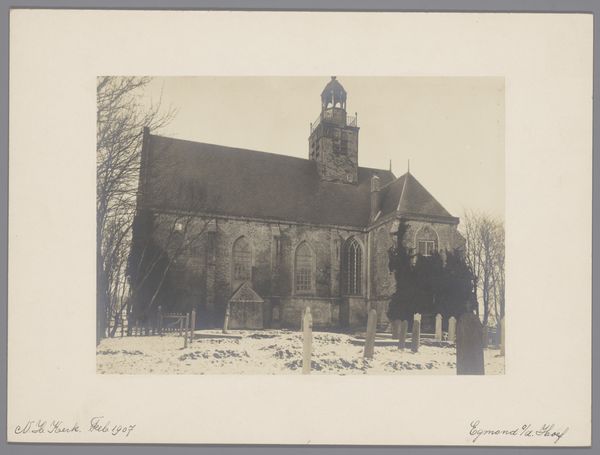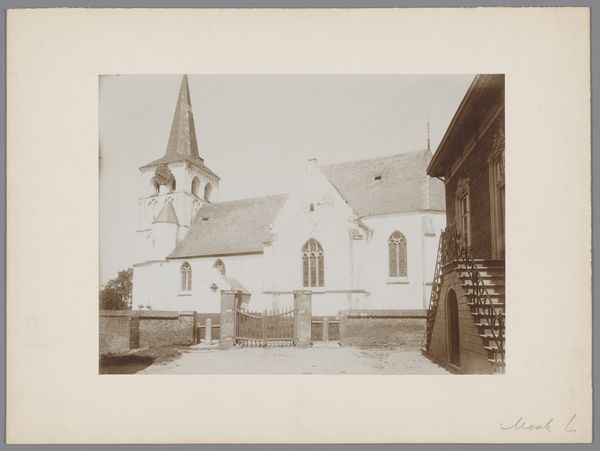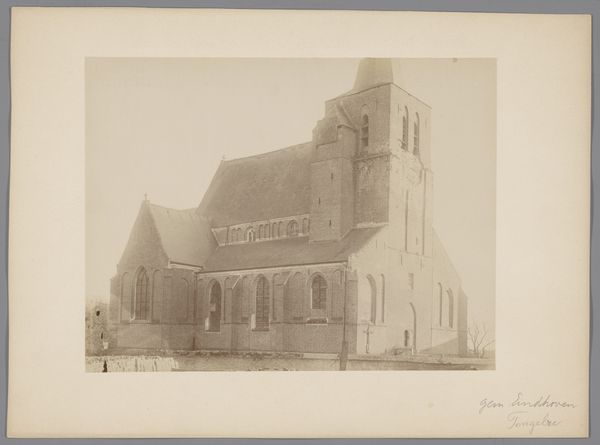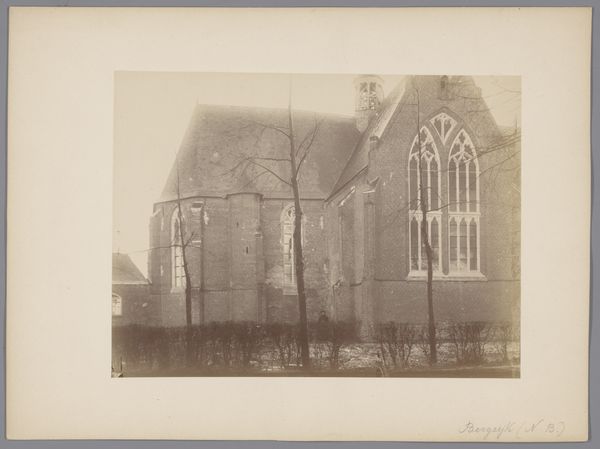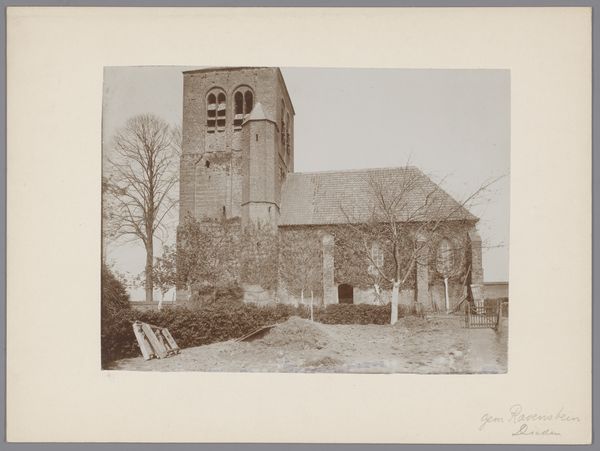
Dimensions: height 168 mm, width 235 mm
Copyright: Rijks Museum: Open Domain
Curator: Looking at this vintage print from 1889, titled "View of the Old St. Martinus Church in Tongelre," the stark lines and faded sepia tones immediately suggest a powerful sense of history and the enduring presence of faith. Editor: There is an incredible textural quality visible in the weathered brick of that old church, a kind of handmade materiality speaking of the laborers who formed and laid each one of those bricks by hand. What can you tell me about the means of production and making that underpins this view? Curator: That church would have been a massive undertaking requiring the physical labor of many to create. Brick symbolized solidity, permanence, qualities sought after in houses of worship hoping to transmit unchanging ideals. Notice also how the vertical lines, and reaching spire emphasize humanity striving to transcend the material realm. Editor: Those architectural forms! Those sharp gables create dynamic rhythms which reveal this monument of masonry. The builders knew their materials and constructed this building in stages: foundations of quarried stone followed by rows of stacked brick, bound together with lime mortar; their choice and use of simple components yielded this timeless church for worship and for centuries of use. Curator: Indeed. And from an iconographic point of view, St. Martinus himself is represented by that soaring tower and weathervane – a steadfast guide – especially in a time before industrial light, before technologies altered spiritual relationships, so these views represented far more than stone and clay for the culture of that moment. Editor: Exactly. How was it situated to reflect material accessibility, labor practices, local customs and craftsmanship of 1889 society? The church faces outward into what we can assume was once a vibrant town. Curator: So this simple depiction isn't just about religion; it is about community and identity centered around its spiritual beacon – but made and labored on by material earthly beings. Looking at this today can deepen our connection to the past. Editor: The simplicity here underscores that everything has a history of making. Now, viewing these forms constructed for ritual in 1889, the human drive to make and to do has hardly changed even while the meanings shift and technologies of production continue to innovate!
Comments
No comments
Be the first to comment and join the conversation on the ultimate creative platform.

